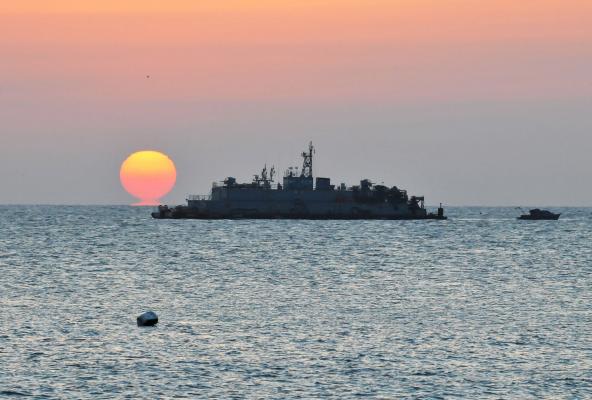By: James Bridger
Despite attempts to brand itself as a luxury tour destination, Kenya has been unable to escape the harsh reality that it borders a failed state of Hobbesian proportions. Instability has spilled over in recent weeks, as Somali militants launched a series of daring raids into Kenyan territory: On 11 September Judith Tebbutt, a British tourist, was kidnapped after her husband was killed; three weeks later a disabled French woman, who has since died in captivity, was similarly abducted; on 13 October, two Spanish aid workers were seized from Kenya’s Dadaab refugee camp. The abductions, coupled with the impact of Somali piracy, have dealt a major blow to Nairobi’s $800m-a-year tourism industry. The government’s response has been robust: approximately 2000 Kenyan troops, supported by artillery and air power, have been sent into southern Somalia to rout al-Shabaab—the al-Qaeda-linked Islamist militia which Nairobi blames for the kidnappings. While some Western observers may disregard this as a minor operation in an insignificant—though perpetually violent—theatre, the outcome of the Kenyan incursion will have a dramatic impact on global counter-terrorism, regional security, and the EU and NATO-supported peace efforts currently underway in Somalia.

Ravaged simultaneously by famine, piracy, and Islamist insurgency, the failed state of Somalia has recently resurfaced on the global agenda after decades of neglect. As The Guardian’s Simon Tisdall notes, the country “has become a vortex of instability, suffering and terror that radiates ever outward to affect all those within its orbit, even hundreds of miles out to sea.” Perhaps no other state is more affected by Somalia’s tribulations than Kenya. The East African country boasts a large ethnic Somali population, recently swelled by the near 500,000 refugees who have fled the famine. Nairobi is deeply concerned that al-Shabaab has been recruiting ethnic Somalis in Kenya into its ranks. The greater fear is that Somalia has become an international jihadist breeding ground, bringing a collection of foreign fighters from South Asia, Europe and even North America together for training under the al-Shabaab banner. Both NATO and EU have been providing financial and logistical support to the African Union force (AMISOM) that recently pushed al-Shabaab out of the capital Mogadishu. The US has also been quietly engaging in drone strikes against Shabaab targets in southern Somalia. Though Kenya is a close US ally, Washington was reportedly not forewarned of the incursion.
Nairobi’s surprising decision to intervene in Somalia has been met with mixed reactions. The Somalis, not unlike their Afghan counterparts, have a historical record of hostility towards even the most ‘well intentioned’ foreign incursions. Operation Restore Hope, a 1992-1994 UN mission involving 30,000 troops, ended in disaster after 18 US Rangers were killed in the infamous “Black Hawk Down” incident. A 2006 Ethiopian invasion succeeded in ousting the Islamic Courts Union from political power, but quickly devolved into guerilla war—paving the way for the rise of al-Shabaab. Fears have been raised that the Kenyan forces—inexperienced in counter-insurgency—will become similarly bogged down. Regardless of past failures, Tisdal describes the Kenyan decision as “a brave one that should be supported by western powers,” who are otherwise “at a collective loss over what to do about Somalia.”
Though the abductions are the declared casus belli for the Kenyan incursion, it is likely that the operation has been planned for some time, motivated by a broader Kenyan need to secure their porous border. The country’s interior minister describes the mission as a “legitimate act of self-defence necessary to protect lives and safeguard the Kenyan economy;” a response to “a chronology of provocation by al-Shabaab.” The militia, however, has denied a role in the kidnappings. The maritime nature of the first two abductions, coupled with the fact that the captives were reportedly brought to the pirate-infested port of Kisamayo has led many experts to conclude that pirate gangs, not Islamists, are behind the abductions. Despite the murky identity of the perpetrators, the kidnappings have garnered international support for Nairobi’s cause. Will Ross, the BBC’s East Africa correspondent, contends that the intervention “seems at least partially aimed at sending a message to the Kenyan people and the rest of the world that the issue of security is being taken seriously.”
The Kenyan offensive, dubbed “Operation Linda Nchi” (protect Kenya), has received the blessing of Somalia’s embattled Transitional Federal Government (TFG) and the African Union force that supports it. On October 15, Kenyan troops captured the border town of Qoqani following aerial and artillery bombardment. The military is now moving to secure Afmadow, a strategic city located 120km inside Somalia. Though they have been slowed by heavy rains and poor roads, the Kenyan force plans to link up with TFG troops and anti-Shabaab militias for what is being described as “the mother of all battles.” Al-Shabaab are bringing in fighters from across southern Somalia to reinforce Afmadow, they have been seen digging trenches and constructing other fortifications. It is not yet clear whether or not Kenya and its allies will be able to take the city. Nairobi’s largely untested army is facing a guerilla force that has been fighting almost non-stop for the past five years.
If Kenya is able to secure Afmadow it will have a profound effect on the regional balance of power. Just to the south lies the port of Kismayo, whose taxes and pirate tithes have become al-Shabaab’s primary source of income. If the now largely undefended port falls, both Somalia’s Islamists and pirate gangs will be dealt a severe blow. Should al-Shabaab be defeated, there is the danger that a power vacuum may be created—a reprise of the 2006 Ethiopian invasion’s aftermath. The International Crisis Group reports that al-Shabaab’s weakness is already leading towards “a free-for-all contest in which clans are unilaterally carving up the country into unviable clan enclaves and cantons.” Nairobi has assured the TFG that they have no plans for an occupation of southern Somalia. The Kenyan exit strategy will likely involve equipping and supporting local forces that are antipathetic to the Islamists. The goal is to create a buffer zone which will prevent Somali violence from spilling into Kenya.
Further Readings: Kenya raises the stakes; Kenya troops ‘advance into Somalia near Afmadow’; Kenya says making gains against al-Shabab; Kenya’s intervention in Somalia is a brave move; As an enemy retreats, clans carve up Somalia



